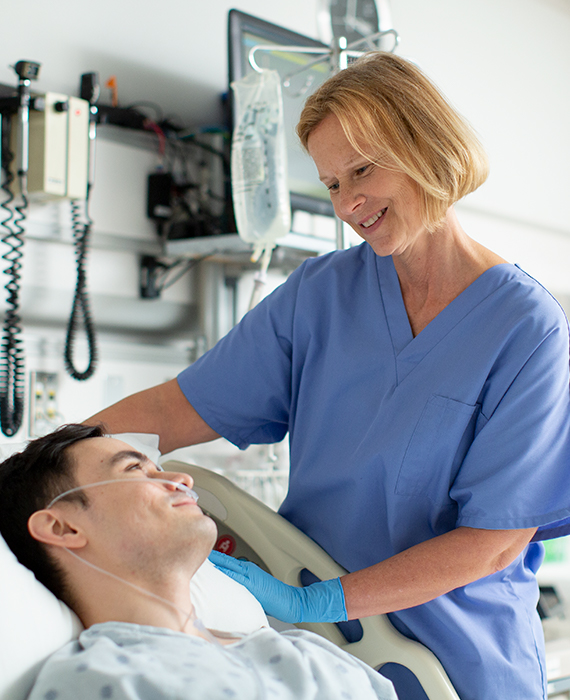Clinical and Economic Outcomes
A CLINICALLY AND ECONOMICALLY BENEFICIAL SOLUTION
Driven by advanced technology and backed by key clinical data, the Starling system provides accurate and reliable fluid monitoring with real-time, continuous measurement of stroke volume and other critical parameters.1 The vital information provided by the Starling system enables clinicians to make therapy decisions that help improve patient outcomes and reduce the total cost of care.2-4

PROPER FLUID MANAGEMENT MAY IMPROVE CLINICAL OUTCOMES AND REDUCE COSTS
Some 80% of hospital patients receive intravenous fluid therapy as an integral part of their treatment regimen.5 However, one in five patients suffers from complications due to fluids.6 Clinical studies show that giving too much or too little fluid can result in serious complications and be a factor in rising healthcare costs.7,8
Improper fluid management is associated with higher length of stay and increased ventilation, acute dialysis, mortality and total hospitalisation costs.2,3,9
The FRESH (Fluid Responsiveness Evaluation in Sepsis-associated Hypotension) study, a prospective multicentre trial of 124 sepsis patients, showed improved outcomes with resuscitation guided by dynamic assessment and the Starling system.4
1.37 L
DECREASED fluid balance at 72 hours4
16.4%
REDUCED initiation of mechanical ventilation4
12.4%
REDUCED initiation of renal replacement therapy4
20%
MORE LIKELY to be discharged home alive4
An earlier retrospective, matched, single-center study of 191 sepsis patients by researchers from the University of Kansas Health System showed positive outcomes, as well as potential cost savings.2,3
2.89
DAYS reduced length of stay in ICU2
28%
REDUCED initiation of mechanical ventilation2
13.25%
REDUCED initiation of acute dialysis2
$14K+
POTENTIAL SAVINGS per treated patient3
SV STARLING Monitor — Non-invasive haemodynamic monitoring system.
Intended purpose: The Starling SV system, with NIBP and SpO2 functionality, is intended for professional use in healthcare facilities. It is a portable non-invasive haemodynamic cardiac output monitor. It monitors and displays a patient's cardiac output (CO) in l/min with a non-invasive blood pressure (NIBP) function that non-invasively measures and displays blood pressure (diastolic, systolic and mean) and heart rate, and an SpO2 function that non-invasively measures and displays blood oxygen saturation (SpO2). The device displays the corresponding haemodynamic parameters based on measurements or measurement calculations already incorporated in the Starling SV.
Class IIa device. Notified body: MEDCERT - Germany (CE 0482).
Please refer to the instructions for use for information necessary for proper use.
Carefully read the instructions in the package insert.
Date of revision: 31 March 2020.
Baxter and Starling are trademarks of Baxter International Inc. or its subsidiaries.